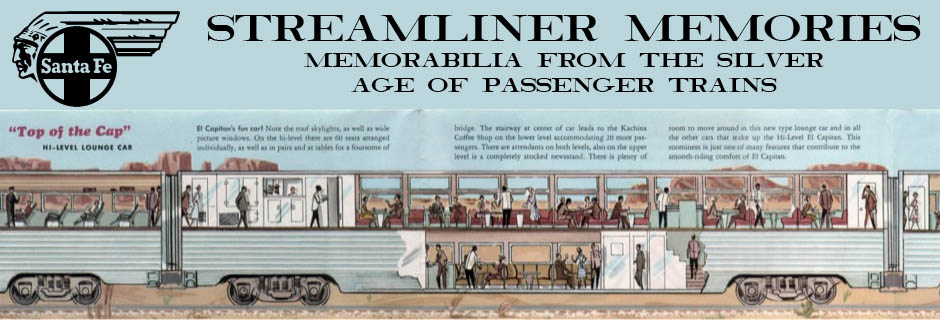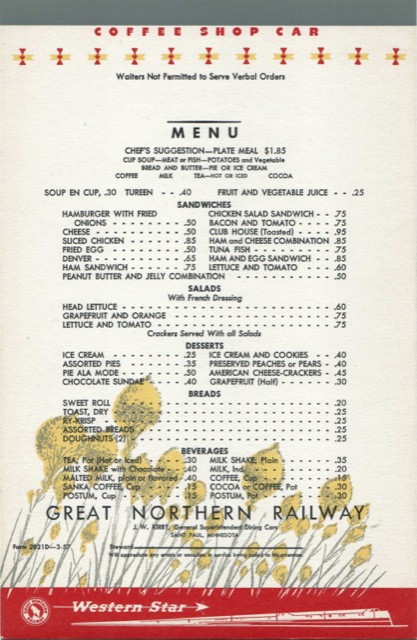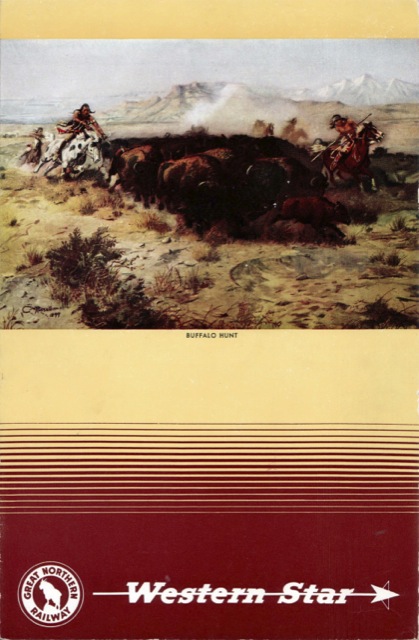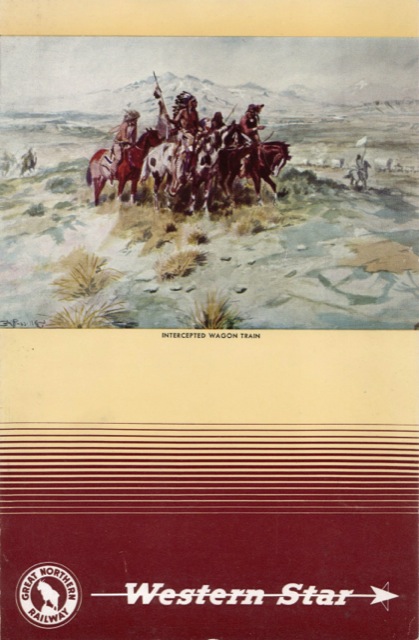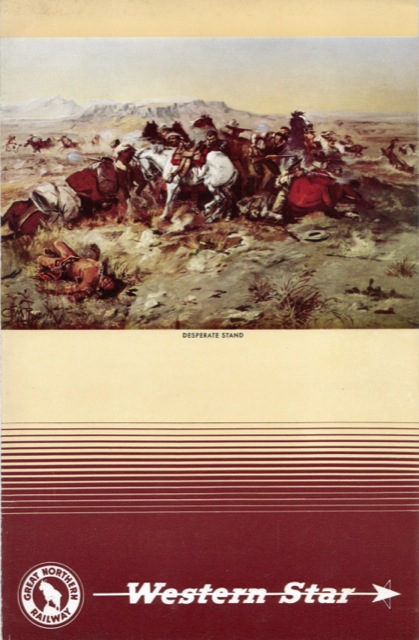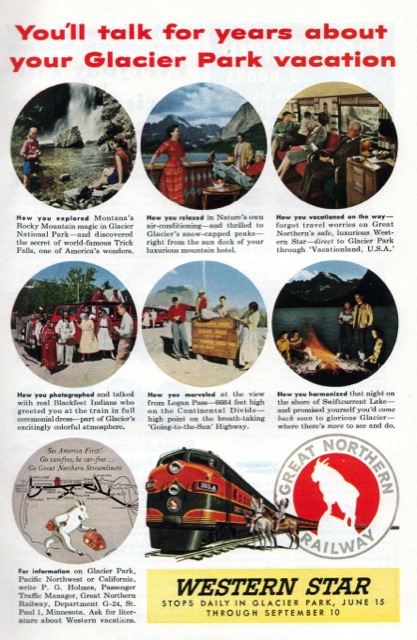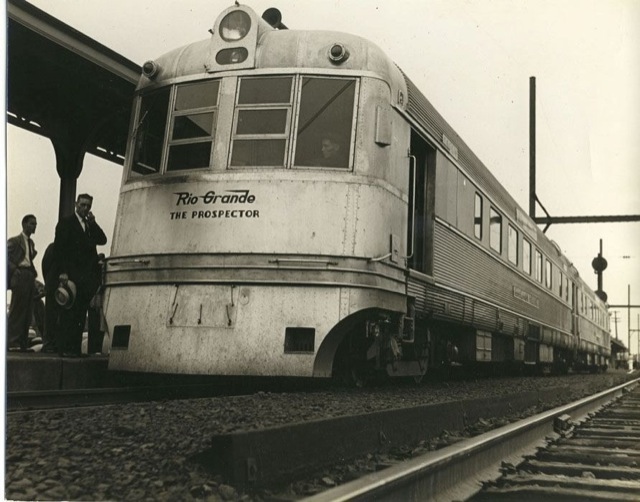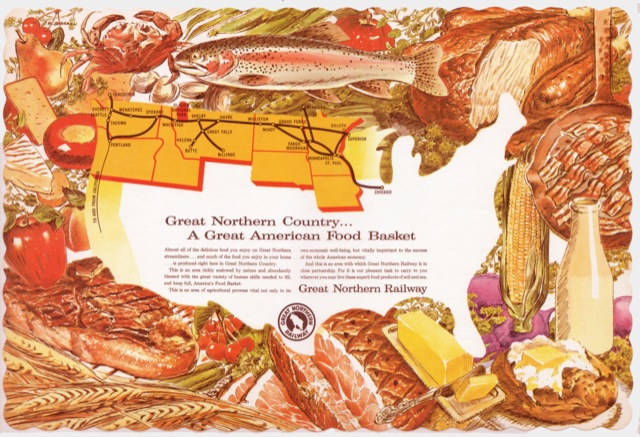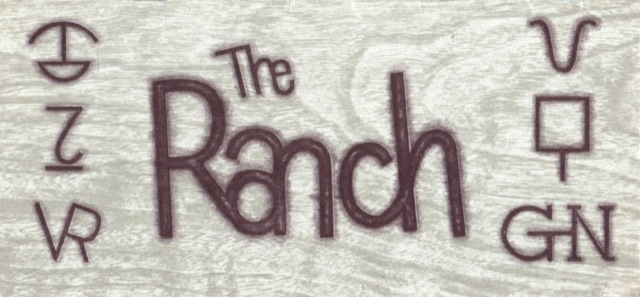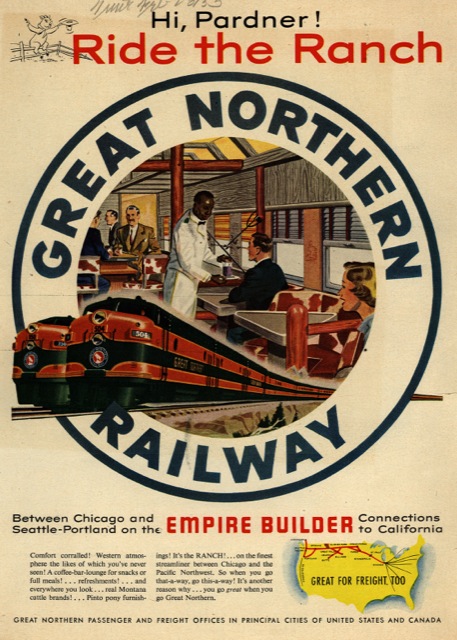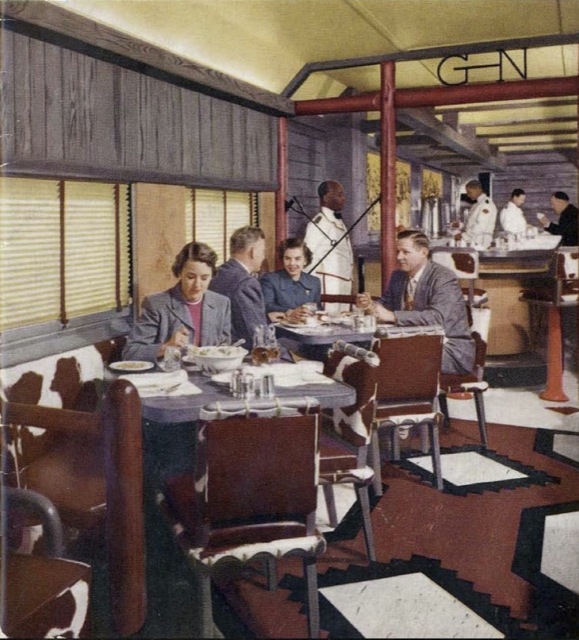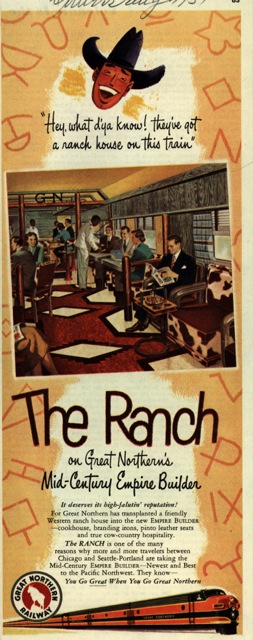Just like on the Empire Builder, the Great Northern offered postcards and stationery to passengers on the Western Star. This unused postcard shows Blackfeet Indians greeting Western Star passengers at Glacier National Park.
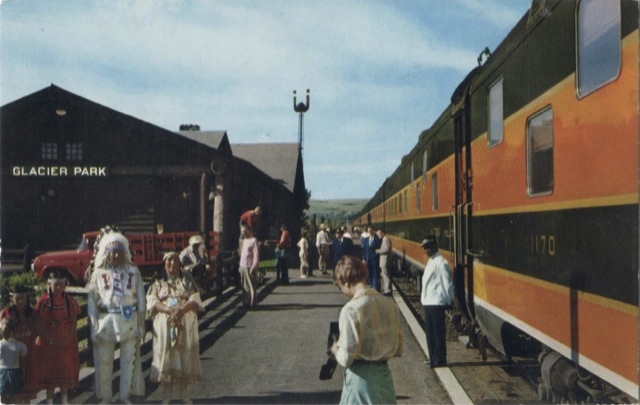
Click image to download a PDF of the front and back of this postcard.
This postcard shows the Western Star along the Flathead River. The photo is credited to Bob and Ira Spring, twin brothers who wrote more than 60 books about Northwest hiking trails and wilderness. Postmarked in 1958, the person who used this postcard says he “saw place where new all continuous welded rail is being installed in new high speed curves. . . . Train is nice as always.”
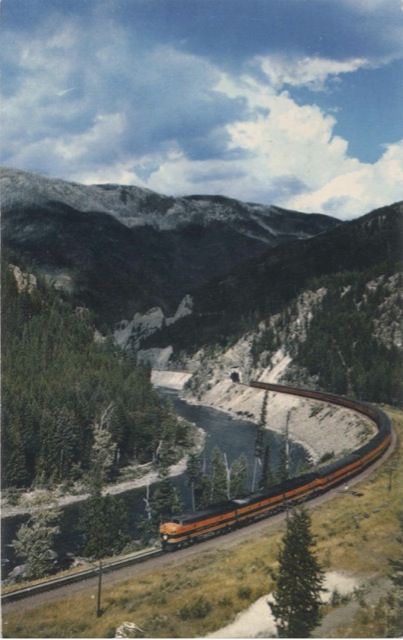
Click image to download a PDF of the front and back of this postcard.
